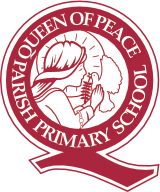Health & Phys Ed
In Physical Education, students develop the knowledge, understanding and skills to strengthen their sense of self, and build and manage satisfying relationships. Integral to Physical Education is the acquisition of movement skills, concepts and strategies to enable students to confidently, competently and creatively participate in a range of physical activities. As a foundation for lifelong physical activity participation and enhanced performance, students develop proficiency in movement skills, physical activities and movement concepts and acquire an understanding of the science behind how the body moves. In doing so, they develop an appreciation of the significance of physical activity, outdoor recreation and sport both in Australian society and globally.
Children participate in a structured program from Years Prep to 6 for one hour a week with our Phys Ed specialist teacher, where skills are sequentially developed. Minor and major games are taught and played as well as athletics activities. Children are able to participate in inter-school sporting activities as they progress into the older year levels.
Music
In music, the children focus on both making music and responding to music. The children listen and respond through singing, movement, dance and playing instruments. The children learn about musical elements including; beat, rhythm, pitch, melody, tempo, expression, tone colour, form and style.
Making music involves; listening, imitating, singing, playing, rehearsing improvising, comparing, recording, notating, presenting and making decisions about the performance that will engage the audience.
Responding to music involves listening, reflecting, analysing, appreciating and evaluating their own and other’s musical works.
(Optional) Music Tuition
Private lessons are held on site, during school hours with fees payable direct to the tutor:
- Guitar Lessons for all year levels, with Caleb Roksandic. Please email enquiries to calebroksandic@gmail.com
- Piano Keyboard Lessons for year one and above. Please email your enquiries to belinda.janejenkin@gmail.com
- Singing Lessons with Irene Attard. Duo lessons also available. Please email your enquiries to iattard@hotmail.com.au*Don’t forget to include your child’s name and class.
Visual Arts
Learning in Visual Arts provides student with opportunities to apply and develop their arts knowledge by exploring visual arts processes and ways to communicate concepts arising from their personal experiences and from the world around them. The students express their ideas, observations and feelings using a range of materials and techniques to make both two-dimensional and three-dimensional artworks. They develop confidence when creating and reflecting on their own artwork and responding to constructive feedback.
Please take time to view the work of our talented and enthusiastic student showcased in the ‘2021 Senior Art Show’. We celebrate our young artists and recognise their individual achievements in taking risks, acquiring new skills and creating artworks they can be truly proud of. “It is wonderful to share our children’s enthusiasm for the Visual Arts as they work individually and collaboratively supporting each other. It is delightful when they surprise themselves with their ‘hidden’ talents as they develop their unique artistic styles. It is an absolute pleasure to be part of their journeys” – Sue Rigby, Senior Visual Arts Teacher
Auslan (Australian Sign Language)
In 2023 we introduced Auslan as the additional language taught at Queen of Peace. There are many benefits for all children, including the development on new neural pathways, increased cognitive processes, greater social awareness and exposure to alternative ways of thinking and communicating.
Library
In Library, children in Years Prep – 2 read and respond to books written by various authors. They learn that an author creates stories using text and images. The children also look at the features and purpose of the two main text types in the library – imaginative texts (fiction) and informative texts (non-fiction). The children compare different text types about the same topic.
All Year Levels have a rostered time in the library for borrowing books, reading, research or teacher directed learning.
